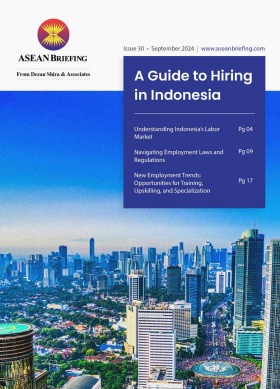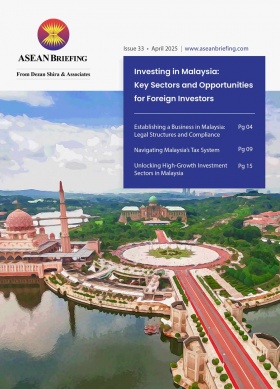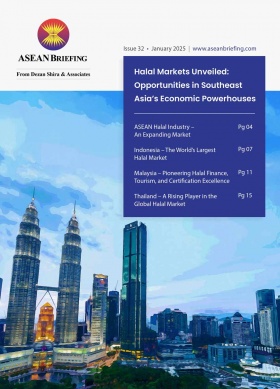Indonesia’s Nickel Downstreaming Policy: Opportunities and Challenges for Investors
Indonesia is the world’s largest nickel producer, holding an estimated 55 million metric tons of nickel reserves, which accounts for 42 percent of global reserves. The country’s nickel production surged from 1.6 million metric tons in 2022 to 2.2 million metric tons in 2024, with further growth expected through 2028. This dominant position is driven by the increasing demand for nickel in the electric vehicle (EV) industry, stainless steel production, and battery manufacturing.
Indonesia’s nickel downstream strategy is rooted in its commitment to resource nationalism and value-added industries. The 2014 raw ore export ban was a turning point, reshaping global supply chains and compelling foreign firms to invest in domestic processing facilities.
Before the ban, Indonesia exported 64 million metric tons of nickel ore annually. In 2014, exports fell to nearly zero, but this shift triggered a boom in domestic smelting. The number of nickel smelters grew from 2 in 2014 to over 30 projected by 2025, significantly boosting government revenue. Export taxes on processed nickel products have increased state earnings, replacing lost income from raw ore exports.
As a result, investment in nickel processing has surged, leading to a significant increase in smelting capacity, with the number of operational smelters more than doubling from 13 in 2019 to over 30 expected by 2025.
This growing industrial base presents strategic opportunities for foreign firms looking to integrate into Indonesia’s expanding nickel value chain while benefiting from its favorable regulatory environment and access to critical raw materials.
Infrastructure development for nickel processing
The rapid expansion of nickel processing facilities has led to significant investments in industrial parks, smelting plants, and supporting infrastructure.
- Nickel smelting capacity: As of early 2025, Indonesia has 44 operational smelters, with 21 more under construction.
- Industrial parks: Key processing hubs include Morowali Industrial Park and Weda Bay Industrial Park, with additional projects planned in Central and Southeast Sulawesi, attracting nearly US$40 billion in investments.
- Power Supply Challenges: Most nickel smelters are powered by coal-fired plants, contributing significantly to carbon emissions. While there is an increasing push for renewable energy sources, implementation remains limited.
- Investment growth: The value added from nickel production surged from US$1.4 billion in 2020 to US$34.8 billion in 2023, reflecting the success of Indonesia’s downstream efforts.
Investment models and ownership structures
Indonesia has developed various investment models to attract foreign participation while ensuring local involvement in the nickel sector. Foreign ownership regulations have evolved, allowing foreign investors to hold up to 70 percent ownership in nickel mining ventures, up from the previous 49 percent, which has encouraged greater foreign direct investment.
Key industry players include Chinese conglomerates such as Tsingshan Holding Group and Jiangsu Delong Nickel Industry Co. Ltd, which have invested over \US$10 billion in Indonesia since 2015.
Japanese investors, notably Sumitomo Metal Mining, hold significant stakes in major nickel producers, while Western firms such as Vale S.A. (Brazil) and Eramet (France) have established strong operational footprints. To further stimulate investment, the Indonesian government offers generous incentives, including tax holidays of 15 to 20 years, import duty exemptions on processing equipment, and infrastructure subsidies for power plants and transportation networks.
However, investors must meet stringent capital requirements, with 90 percent of smelter construction needing completion before export permits are granted**, ensuring commitment to long-term industrial development.
Financial and market considerations for investors
Nickel processing requires high capital investment, as the financial feasibility depends on factors such as the cost of high-pressure acid leaching (HPAL) technology, access to financing through foreign direct investment (FDI) or Indonesian banks, and government-backed initiatives.
Investors must also consider fluctuating market demand for different nickel products, including nickel pig iron (NPI), ferronickel, and nickel sulfate, which is increasingly in demand for EV battery manufacturing. With Indonesia’s processed nickel exports projected to grow significantly by 2030, the long-term investment outlook remains promising, provided investors navigate regulatory requirements and infrastructure challenges effectively.
Regulatory and compliance challenges
Despite lucrative investment opportunities, navigating Indonesia’s regulatory landscape can be complex.
- Permit processing: Lengthy approval times for mining and processing permits can delay project timelines.
- Environmental compliance: Stricter regulations are being introduced to manage carbon emissions and water consumption from nickel smelters.
- Local content rules: Investors must meet minimum local workforce and material requirements.
- Corruption risks: Companies must adhere to Indonesia’s anti-corruption laws to avoid compliance risks.
Conclusion: Strategic opportunities for foreign investors
Indonesia’s nickel downstream policy is reshaping the global supply chain, offering foreign investors a unique chance to gain a foothold in one of the world’s most critical resource industries. The country’s abundant nickel reserves, extensive government incentives, and rapid expansion of processing infrastructure make it a highly attractive investment destination.
However, success in this sector requires careful navigation of regulatory complexities, environmental considerations, and evolving foreign ownership policies. The Indonesian government’s push for greater local participation and sustainability standards means investors must take a strategic approach to compliance, infrastructure development, and market positioning. While Chinese and Japanese firms have already established substantial operations, opportunities remain for Western investors seeking entry through joint ventures, partnerships, and innovative business models.
About Us
ASEAN Briefing is one of five regional publications under the Asia Briefing brand. It is supported by Dezan Shira & Associates, a pan-Asia, multi-disciplinary professional services firm that assists foreign investors throughout Asia, including through offices in Jakarta, Indonesia; Singapore; Hanoi, Ho Chi Minh City, and Da Nang in Vietnam; besides our practices in China, Hong Kong SAR, India, Italy, Germany, and USA. We also have partner firms in Malaysia, Bangladesh, the Philippines, Thailand, and Australia.
Please contact us at asean@dezshira.com or visit our website at www.dezshira.com and for a complimentary subscription to ASEAN Briefing’s content products, please click here.
- Previous Article 应对美国关税政策:印度尼西亚的战略展望与对策分析
- Next Article ASEAN’s Response to US Tariffs: Toward a Unified Regional Strategy







